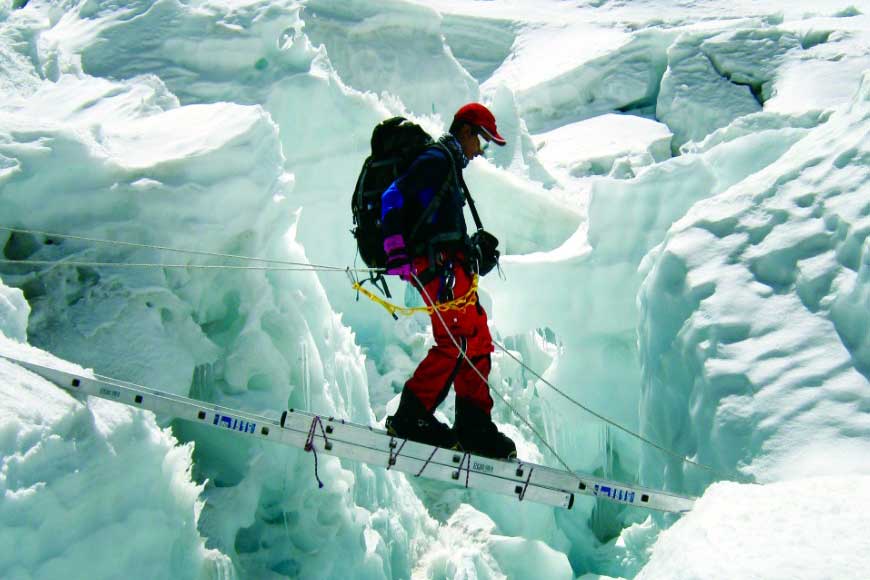Himalaya’s daughter: How Bengal’s foremost mountaineer became involved with Durga Puja

In 2010, Debasish Biswas became the first Bengali civilian mountaineer to reach the top of Mt Everest. In 2011, against severe odds, he repeated the record by summiting Mt Kanchenjunga, the world’s third highest peak, and one of its most notoriously difficult ascents.

As a young employee of the Income Tax department, Biswas and the team that accompanied him had barely enough to fund that first expedition to Everest, until one of his commissioners suggested he form a trust to raise money, and she actually helped him register it in record time. Thus was born the Aarohan Trust, initially intended to assist and sponsor deserving mountaineering expeditions.
How the trust became involved with Durga Puja is a whole different story. As Biswas laughingly tells it, “After all, Durga is Himalaya’s daughter, so the connection practically establishes itself.” Jokes apart, following his return from the summit of Mt Annapurna in 2012, Biswas was approached by a few colleagues and friends who had been involved with a few Pujas of long standing, but who now found themselves cast out of Puja committees in a changing political landscape.

“They were so passionate about Durga Puja that it became impossible for them to be totally detached from it. And they asked me if the trust would provide som
e initial help so they could start their own Puja,” he explains. Thus was created Utkarshe Aarohan, an initiative that by default became the voice for humble, small Pujas that are often overshadowed by their more glamorous counterparts.

In the following decade or so, Utkarshe Aarohan has established itself with a Sharad Samman (award) handed out to a select number of Pujas, a practice famously begun by Asian Paints in 1985 and enthusiastically adopted by a whole host of corporate entities since.
Which is why the question arises, given the mushrooming Puja awards every year, does Utkarshe Aarohan really bear any special meaning? “We try to honour the efforts of everyone involved with a Puja, especially the people you don’t normally see, such as artisans, labourers, and many others,” Biswas says. “In today’s times, I see so many sponsors using a Sharad Samman merely as a publicity vehicle, a way to advertise without actually spending too much on advertising. We want to stay away from that.”

Biswas also sees Utkarshe Aarohan as a way to promote the art and craft of Bengal, which are inextricably linked to Durga Puja. “It is the world’s largest art show, and so many talented, unknown artists contribute to it. If only for this reason, I believe we should continue to promote the Sharad Samman.”

The recent UNESCO intangible heritage tag has merely strengthened his conviction. “I was indirectly involved with the process of obtaining the tag, and it is precisely owing to the artistic component of Durga Puja that the tag has been granted. We should do everything we can to promote it,” he says.

Every year for the past few years, Biswas has overseen the publication of a special booklet during Puja, for circulation among Puja committees, dealing with all aspects of Durga Puja, including historical contexts. “I’ve even written about the connection between Mt Annapurna and Maa Durga!” he laughs. Utkarshe Aarohan is also putting together a website which will highlight unknown or rarely discussed aspects of Durga Puja, such as the one performed by Muslim women in a part of the Sundarbans.
That ought to be an intangible heritage on its own!











